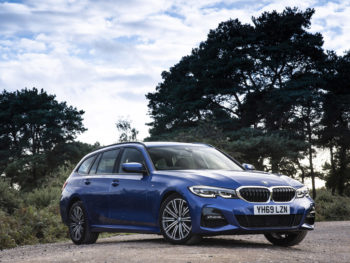European new car registrations hit lowest level since 2015
New car registrations in Europe continued to fall in February, posting the lowest results for the month since 2015.
The figures from Jato Dynamics show 1,063,264 units were registered last month, compared to 1,143,852 in February 2019; a decline of 7.0% and bringing the lowest number of registrations for the month since 2015 – when only 955,113 units were registered.
This aligns to the negative results seen in January when volume fell by 7.6%.
Felipe Munoz, global analyst at Jato Dynamics, said: “The situation is rapidly deteriorating in Europe due to complex regulation, lack of available homologated cars, and increasing pressure on the economy. All of these factors are having a detrimental impact on consumer confidence.”
Against this negative backdrop, electrified vehicles helped boost the market, with registrations up from 75,400 units in February 2019 to 135,500 units in February 2020 as drivers switched out of diesel and petrol cars.
Munoz added: “So far this year, electrified vehicles have been the only lifeline for manufacturers operating in Europe. This is good news, as the industry’s electrification plans have finally seen a positive response from consumers.”
In fact, the volume of EVs more than doubled in Germany and France – their biggest markets. In terms of market share, EVs represented 75% of all passenger cars registrations in Norway, 33% in Sweden, 31% in Finland, 22% in Netherlands and 17% in Hungary. France leads among the big 5 markets, with an EV penetration of 14%, against 13% in the UK, 11% in Germany, 10% in Spain, and 8.6% in Italy.
The figures also show SUVs are now struggling, with registrations down by 1.7% to 415,300 units, taking the year-to-date total to 865,500 units, down by 1.4% from last year. The fall in registrations was due to compact SUVs, declining by 3.7% in contrast to the strong growth experienced by large SUVs, who saw an increase of 17%. Although there was a decrease in SUV registrations their market share did in fact increase due to the overall downturn of the market.
Midsize cars posted the highest growth among all segments, thanks to the BMW 3 Series, boosted by the new generation, and the Volkswagen Passat; their combined registrations made up 31% of the whole midsize segment volume. Unlike last year, the positive results for midsize cars were not thanks to the Tesla Model 3, whose volume actually fell by 6%. Last year, the sedans or saloons were the second most preferred body type among consumers of passenger cars. Their global sales totalled 18.85 million units, equating to one in four of the units sold for passenger cars. However, their volume fell by 6.8%.
Vans also saw an increased in registrations, coming very close to beating the market share of MPVs, who experienced a decrease of 27%.
Model rankings saw the Volkswagen Golf dethroned by the Renault Clio as the top-selling car in Europe, as the new generation hit the dealers. This was due to Renault Clio’s new model having been available to the market for a longer period of time. Other changes within the top 10 included the Fiat Panda moving into the 5th position, and SUVs falling from the rankings entirely.












